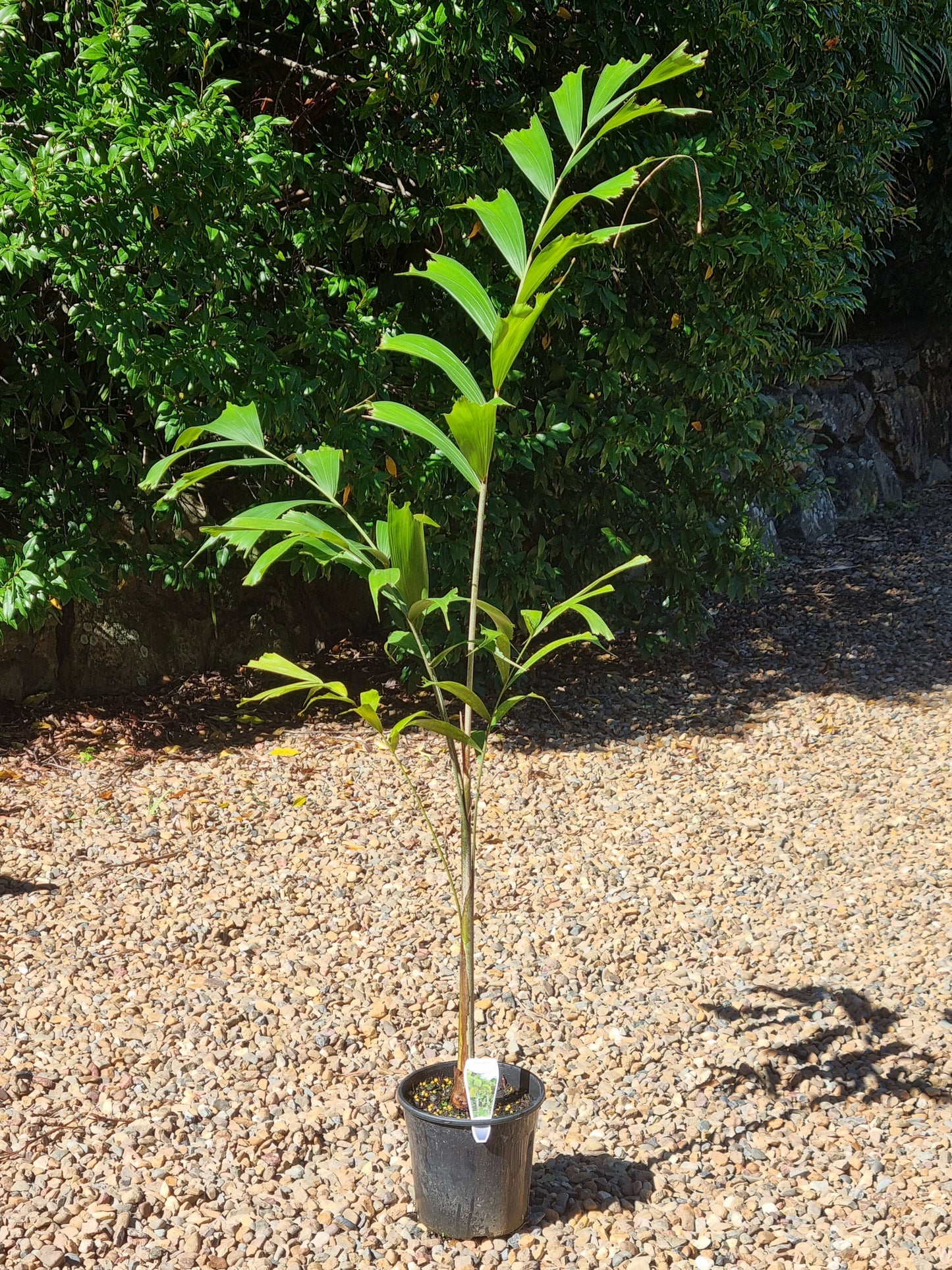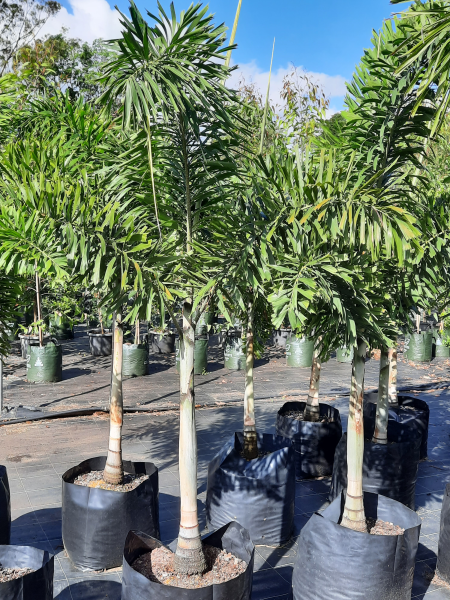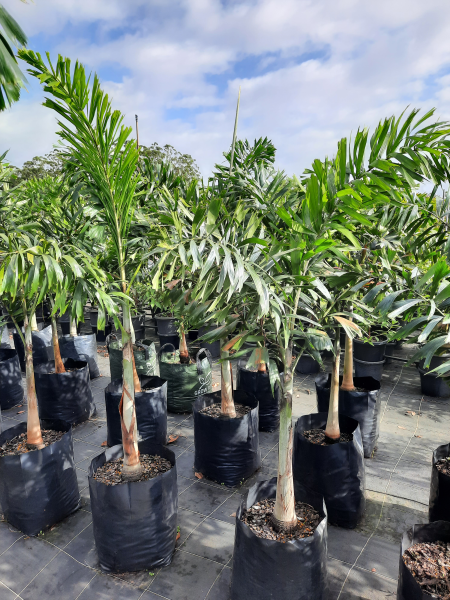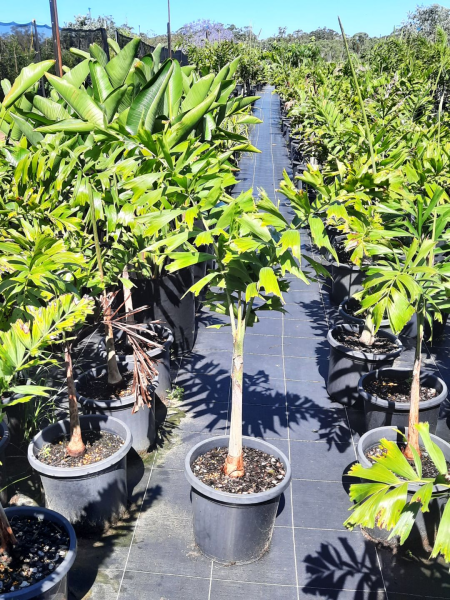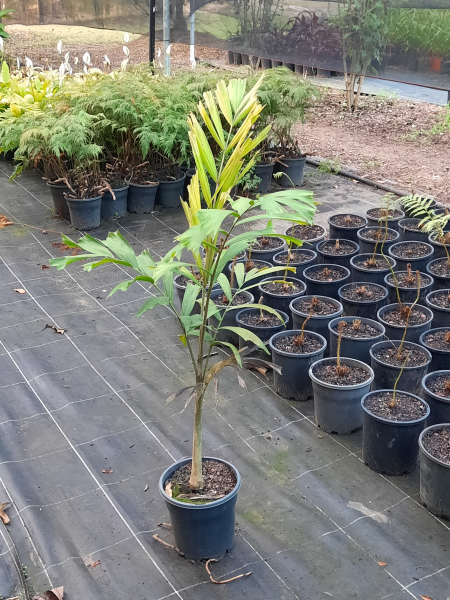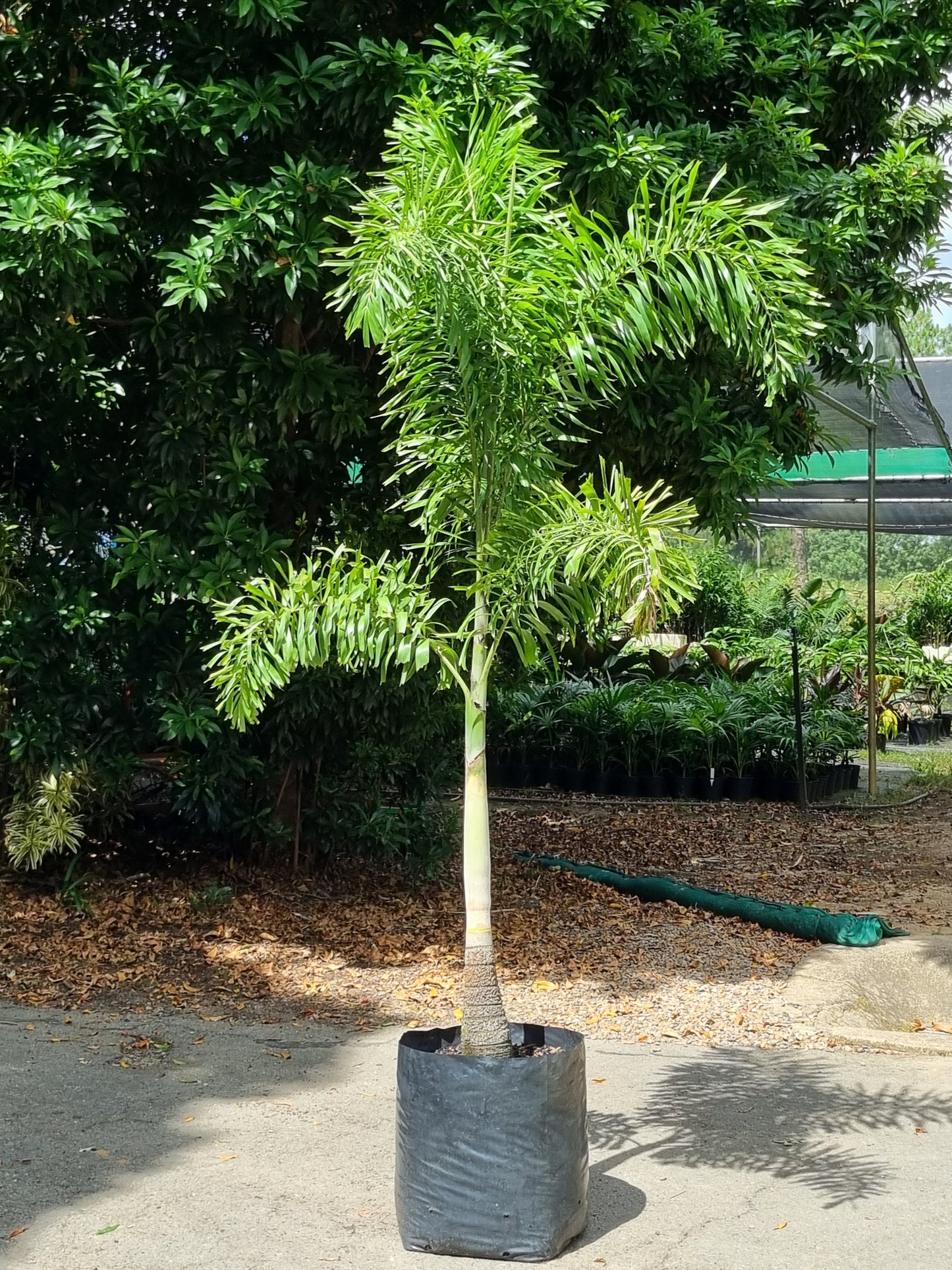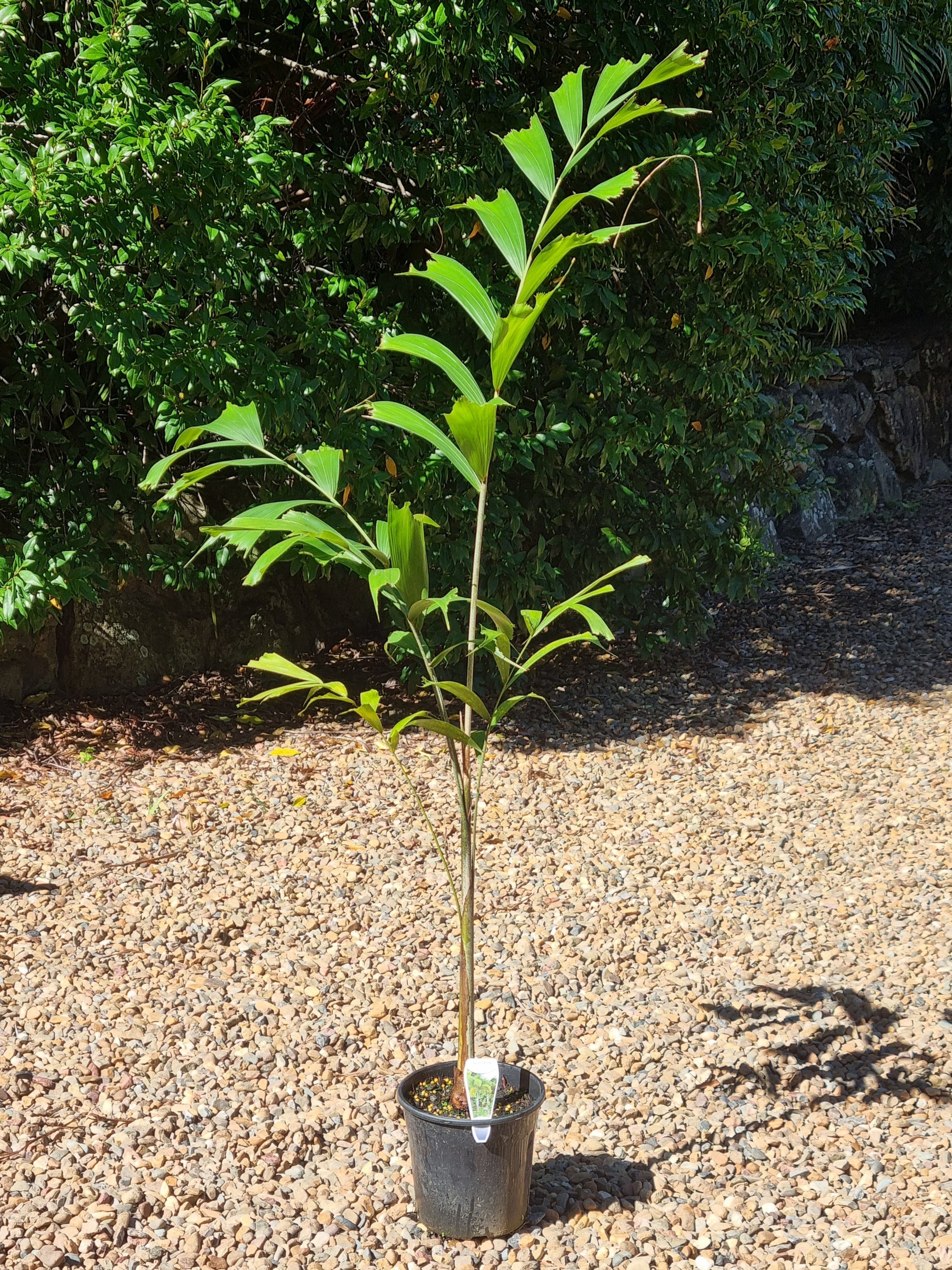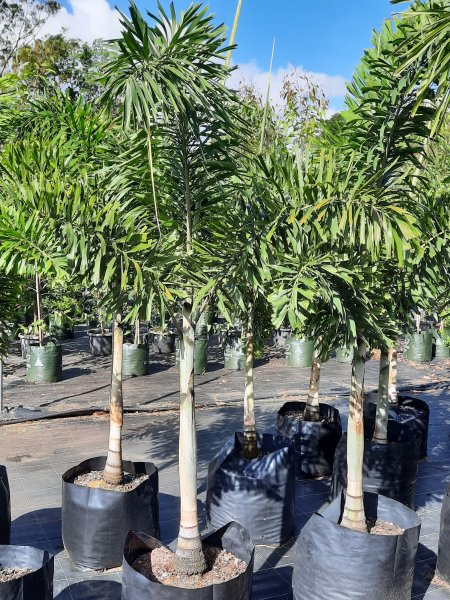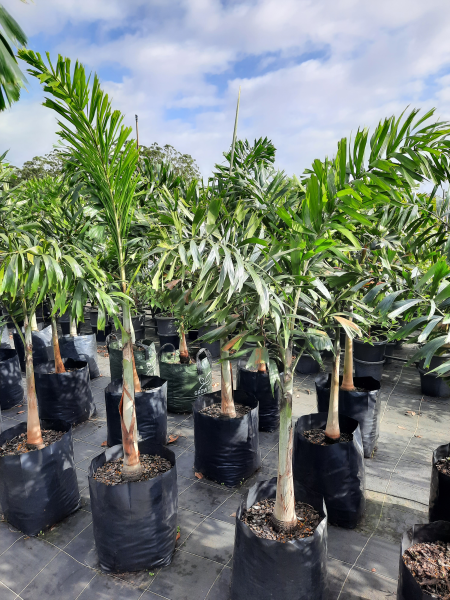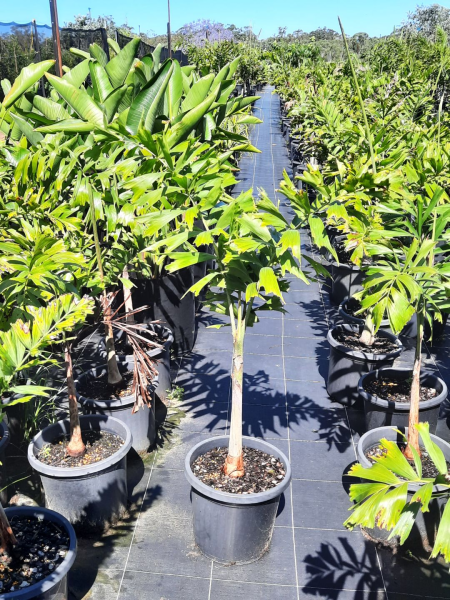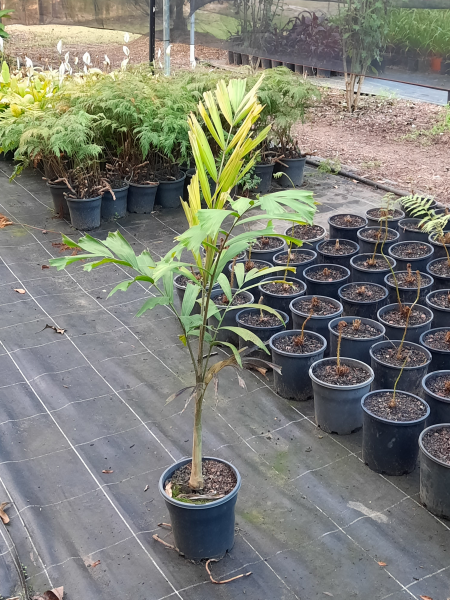Delivertree
Foxtail Palm - Wodyetia bifurcata
Foxtail Palm - Wodyetia bifurcata
Couldn't load pickup availability
The Foxtail Palm is a visually striking and culturally significant palm native to the Cape Melville region of Queensland. It is celebrated for its bushy, foxtail-like fronds and smooth, self-cleaning trunk. Growing to around 10 meters tall, it is highly sought after for landscaping due to its elegant form, low maintenance requirements, and adaptability to warm climates.
Quick Overview:
- Height: Typically reaches about 10 meters
- Trunk: Smooth, slender, and self-cleaning
- Leaves: Bushy pinnate leaves with finely divided segments resembling a fox’s tail
- Flowers: White flower stalks produced from the base of the crown shaft
- Fruit: Bright orange to red, but poisonous and inedible
- Origin: Endemic to the boulder-strewn gravel hills of Cape Melville National Park, Cape York, Queensland
- Name Origin: Wodyetia is named in honour of Wodyeti, the Aboriginal man who introduced the species to botanists in 1978; bifurcata means "divided into two parts," referencing the forking fibres around the seeds
Detailed Description:
The Foxtail Palm (Wodyetia bifurcata) is a solitary palm native to a small and rugged area within Cape Melville National Park in far north Queensland. It was unknown to the scientific world until 1978, when it was introduced by Wodyeti, a local Aboriginal man. This rare discovery quickly rose to international horticultural fame, and the palm has since become a staple of tropical and subtropical landscaping.
Characterised by a slender, smooth trunk that self-sheds old fronds, the Foxtail Palm presents a tidy and elegant silhouette. Atop the trunk is a crown of arching, plume-like fronds made up of numerous narrow leaflets, creating the full, foxtail-like appearance that gives the palm its common name.
In suitable conditions, it produces attractive white flower stalks from the base of the crownshaft. These are followed by vibrant orange to red fruit, which, while ornamental, are toxic and should never be consumed.
The palm is highly adaptable to a range of tropical and subtropical conditions. It thrives in full sun and well-drained soil, and while it enjoys regular watering during establishment, it becomes relatively drought-tolerant once mature. It is commonly used in residential gardens, public parks, and avenue plantings, thanks to its striking appearance and ease of care.
Growth and Maintenance
- Position: Full sun preferred; can tolerate light shade
- Watering: Moderate water needs during establishment; drought-tolerant once mature
- Soil: Prefers well-drained sandy or loamy soil; avoid waterlogging
- Fertilization: Responds well to balanced, slow-release fertilizer, particularly in spring and summer
- Maintenance: Old fronds drop cleanly from the trunk, reducing the need for pruning
Common Uses
- Feature palm: Ideal as a focal point in tropical gardens or courtyard designs
- Street and avenue planting: Widely used in urban landscapes due to its clean trunk and manageable size
- Coastal gardens: Tolerates salty air and windy conditions
- Cultural interest: Celebrated as a uniquely Australian species with a compelling discovery story
Planting Benefits
- Aesthetic Appeal: Distinctive fronds and sleek trunk provide sculptural form and tropical charm
- Low Maintenance: Self-cleaning habit reduces pruning and upkeep
- Cultural Significance: Adds depth and meaning to plantings, linking to Australian heritage
- Versatile Landscaping Choice: Suitable for residential, commercial, and public planting projects
The Foxtail Palm is not only a beautiful and easy-care tree but also a symbol of botanical discovery and cultural heritage. Whether used alone as a statement piece or in a row for symmetry, it brings elegance and resilience to any landscape.
Share
